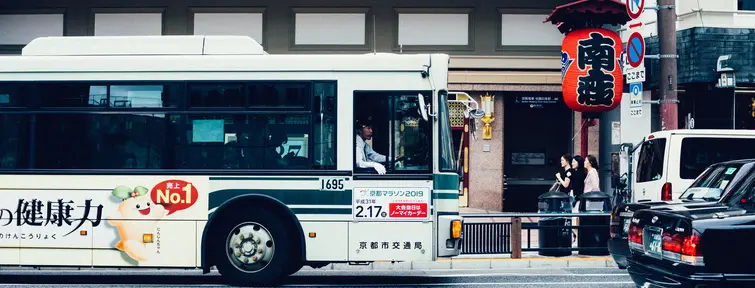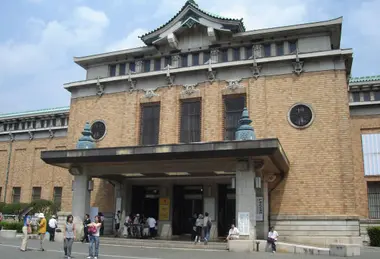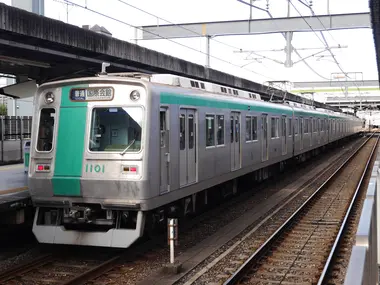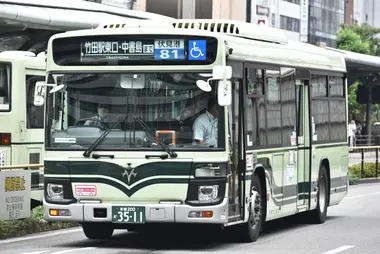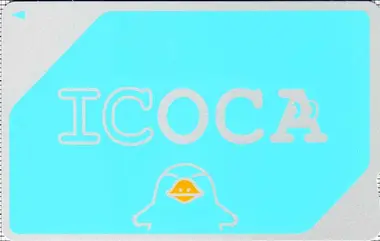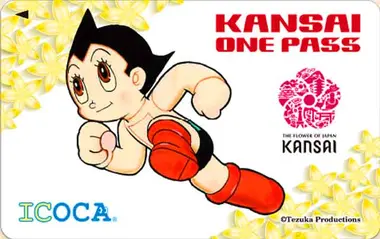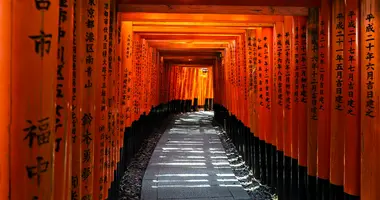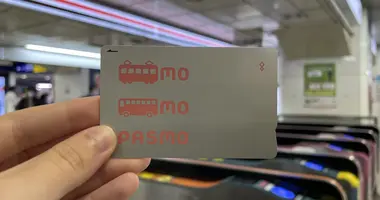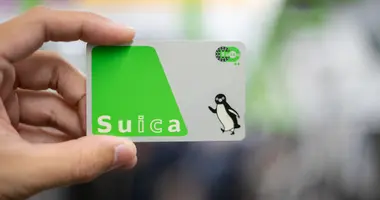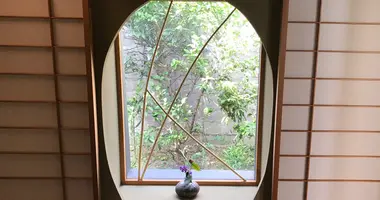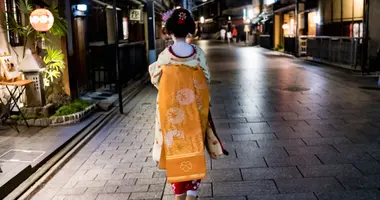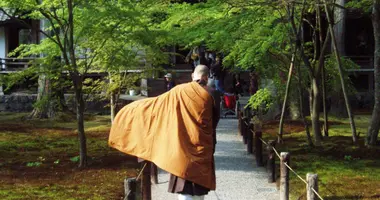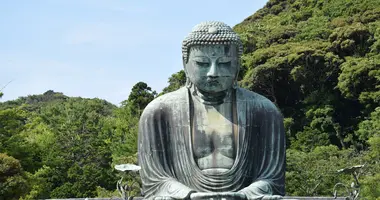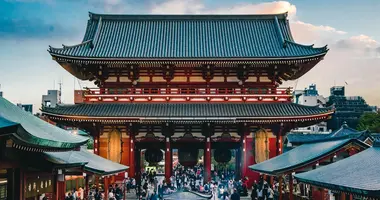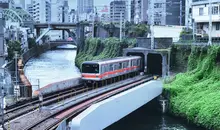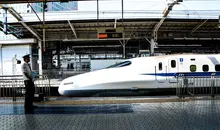Cartes et Pass de voyage en bus et métro à Kyoto
- Publié le : 18/01/2022
- Par : Japan Experience
- Youtube
Les essentiels pour se déplacer à Kyoto
Naviguer dans le système de transport public de Kyoto peut s'avérer déconcertant pour les visiteurs, car de nombreuses sociétés exploitent différents réseaux de bus, de métros et de trains. Il est essentiel de comprendre les différentes cartes de transport et les laissez-passer disponibles pour optimiser votre temps et votre budget dans l'ancienne capitale du Japon. Des cartes journalières aux itinéraires touristiques spéciaux en passant par les options régionales, Kyoto offre de nombreuses solutions de transport adaptées à différents itinéraires. Avec le bon pass en main, vous pouvez explorer les temples du nord de Higashiyama, vous promener dans les bosquets de bambous d'Arashiyama ou vous aventurer dans les villes voisines comme Osaka et Nara.
Comprendre le système de transport public de Kyoto
Le réseau de transport de Kyoto se compose de deux lignes de métro, d'un vaste réseau de bus et de plusieurs compagnies ferroviaires opérant à l'intérieur et autour de la ville. Le principal centre de transport est la gare de Kyoto, qui est reliée à la ligne JR Tokaido-Sanyo, ce qui la rend facilement accessible depuis Tokyo, Osaka et d'autres destinations importantes, notamment la gare d'Odawara, à proximité de Hakone et Hiroshima.
Le système de métro de la ville comprend deux lignes : la ligne nord-sud Karasuma (verte) et la ligne est-ouest Tōzai(rouge), qui se croisent à la station Karasuma Oike. Les tarifs uniques varient de 220 à 350 yens pour les adultes et de 110 à 180 yens pour les enfants, en fonction de la distance parcourue.
Lesbus de la ville de Kyoto fonctionnent selon un système de tarifs fixes de 230 yens pour les adultes et de 120 yens pour les enfants dans la zone centrale, les tarifs augmentant pour les trajets en dehors de cette zone. Lorsque vous montez dans la plupart des bus urbains, vous prenez un ticket numéroté et vous payez le tarif correspondant lorsque vous descendez. Certains bus touristiques express exigent toutefois un paiement à la montée.
Les heures d'ouverture du métro sont généralement de 5h30 à 23h55, tandis que les bus circulent généralement de 6h00 à 22h30. Les deux systèmes peuvent avoir un service réduit les week-ends et les jours fériés.
Cartes de métro et de bus de la ville de Kyoto
Le Subway & Bus One-Day Pass (1 100 yens pour les adultes, 550 yens pour les enfants) est l'une des options les plus polyvalentes. Il permet de voyager de manière illimitée sur toutes les lignes de métro et de bus de la ville de Kyoto, ainsi que sur Kyoto Bus (à l'exception de certains itinéraires), Keihan Bus (dans les zones de Yamashina et Daigo) et certains itinéraires de West Japan JR Bus. Ce pass est idéal pour les visiteurs qui prévoient d'explorer plusieurs zones en une seule journée.
Pour les voyageurs qui privilégient le métro, le Kyoto City Subway One-Day Pass (800 yens pour les adultes, 400 yens pour les enfants) offre un nombre illimité de trajets en métro pendant une journée entière. Ce pass comprend des réductions sur l'entrée à diverses attractions, notamment le Musée municipal d'art de Kyoto, le château de Nijo, le zoo de Kyoto, le Musée de Kyoto et le Musée international du manga de Kyoto.
Le Subway, Bus Two-Day Pass (2 000 yens pour les adultes, 1 000 yens pour les enfants) étend la couverture du One-Day Pass à deux jours consécutifs, ce qui en fait un choix économique pour les séjours plus longs. Ce pass permet de se rendre dans les attractions périphériques telles que le temple Saihō (Kokedera), Ōhara et Iwakura.
Ces laissez-passer peuvent être achetés au centre d'information touristique de la gare de Kyoto, aux guichets des stations de métro, aux bureaux des bus de la ville de Kyoto, ou directement dans les bus de la ville de Kyoto. Pour les visiteurs séjournant à Kyoto pour une longue période, les cartes à puce comme ICOCA offrent une autre option pratique pour le paiement dans les transports publics (en savoir plus sur Comment utiliser les cartes à puce au Japon).
Passes spécialisées pour les itinéraires touristiques populaires
Pour les touristes qui souhaitent visiter efficacement les sites célèbres de Kyoto, plusieurs cartes spécialisées couvrent les itinéraires les plus populaires :
Les bus K'Loop circulent les week-ends et les jours fériés dans le sens des aiguilles d'une montre et relient les principales attractions de Kyoto et les sites classés au patrimoine mondial de l'UNESCO. Une carte journalière coûte 1 500 yens pour les adultes et 700 yens pour les enfants. Elle permet un accès illimité aux arrêts de la gare de Kyoto, du marché Nishiki, du château de Nijo, du temple Kinkakuji, du temple Ginkakuji, du sanctuaire Heian, de Gion, de Kiyomizudera et de bien d'autres encore. Les billets peuvent être achetés directement auprès du chauffeur du bus.
Le Hankyu Tourist Pass (1 600 yens pour une journée) donne un accès illimité aux lignes de train Hankyu, Hanshin et Kobe Kōsoku, qui relient Kyoto, Osaka et Kobe. Cette carte est particulièrement utile pour les visiteurs qui prévoient d'explorer ces villes dans un court laps de temps.
Pour ceux qui souhaitent explorer les régions orientales de Kyoto, le Kyoto Sightseeing Pass de la Keihan Railway (1 000 yens pour une journée) couvre un nombre illimité de trajets sur les lignes Keihan, ce qui est pratique pour visiter des régions comme Gion, le sanctuaire Fushimi Inari et Uji.
Le billet gratuit Arashiyama/Sagano de Kyoto Bus est idéal pour explorer la région pittoresque d'Arashiyama, connue pour ses bosquets de bambous et ses temples.
Pass régionaux couvrant Kyoto et au-delà
Les visiteurs qui prévoient d'explorer d'autres régions que Kyoto peuvent bénéficier de cartes régionales qui couvrent des zones plus étendues :
Le R-West Kansai Area Pass (disponible pour 1, 2, 3 ou 4 jours consécutifs) permet de voyager de façon illimitée sur les trains JR reliant Kyoto, Osaka, Nara, Kobe, Himeji, et le Haruka Express depuis l'aéroport international du Kansai (KIX). Ce pass comprend également un coupon pour chacune des cartes suivantes : Kyoto Subway One-Day Card, Keihan 1-Day Kyoto Sightseeing Pass et Hankyu 1-Day Kyoto Line Free Pass. Les prix varient entre 2 800 yens pour une journée et 7 000 yens pour quatre jours (adultes).
Le JR Kansai Wide Area Pass (5 600 yens pour les adultes) offre une couverture plus étendue, y compris le Sanyo Shinkansen entre Osaka et Okayama, ce qui le rend approprié pour des voyages vers des destinations telles que Kinosaki Onsen et la région de Kumano.
Le Kansai Thru Pass (4 480 yens pour deux jours ou 5 600 yens pour trois jours) donne un accès illimité à la plupart des chemins de fer, métros et bus non JR de la région du Kansai, y compris Kyoto, Osaka, Kobe, Nara et Wakayama. Contrairement à d'autres laissez-passer, il peut être utilisé pendant des jours non consécutifs, ce qui offre une plus grande flexibilité.
Pour les trajets entre l'aéroport du Kansai et Kyoto, le billet Icoca & Haruka offre un tarif réduit sur le Haruka Express et comprend une carte ICOCA préchargée de 2 000 yens.
Cartes et billets spécifiques aux chemins de fer
Plusieurs compagnies ferroviaires proposent leurs propres titres de transport pour des lignes spécifiques :
Le Kintetsu Rail Pass (disponible en options 1 jour, 2 jours et 5 jours) couvre les déplacements sur le plus grand réseau ferroviaire japonais non JR, reliant Osaka, Kyoto, Nara, Ise-Shima et Nagoya. La version "plus" inclut également les bus autour de Nara et de la péninsule de Shima.
Le Hankyu Hanshin One-Day Pass (1 600 yens) offre un accès illimité aux lignes Hankyu et Hanshin reliant Kyoto, Osaka et Kobe, ce qui est pratique pour les excursions d'une journée entre ces villes.
Le Keihan Kyoto-Osaka Sightseeing Pass (1 500 yens pour une journée) offre un accès illimité aux lignes Keihan et Otokoyama Cable Line, ainsi que des réductions dans certaines attractions. Il est particulièrement utile pour les trajets entre les quartiers est de Kyoto et Osaka.
Pour explorer le nord de Kyoto, les cartes Eizan Railway couvrent les itinéraires vers des zones comme Kurama et Kibune, tandis que les cartes Keifuku Randen Line sont utiles pour se rendre à Arashiyama depuis le centre de Kyoto.
Comment acheter et utiliser les cartes de transport
La plupart des cartes de transport de Kyoto peuvent être achetées dans les principales gares, les centres d'information touristique et certains hôtels. Les principaux lieux d'achat sont les suivants
- Centre d'information sur les bus de la gare de Kyoto (près de la sortie centrale)
- Guichets et distributeurs de tickets des stations de métro
- Centres d'information sur les bus et le métro de la ville de Kyoto
- Centres d'information touristique à l'aéroport international du Kansai
- Les principaux hôtels de Kyoto
Certains laissez-passer, comme le Kansai Thru Pass et les laissez-passer JR West, ne sont accessibles qu'aux visiteurs étrangers ayant le statut de "visiteur temporaire". Vous devrez présenter votre passeport lors de l'achat de ces laissez-passer.
Lorsque vous utilisez des cartes journalières dans les bus, insérez votre carte dans le lecteur de cartes situé à côté du chauffeur lorsque vous sortez du bus pour la première fois. La date sera imprimée au verso et vous n'aurez qu'à la présenter au chauffeur lors des trajets suivants.
Pour les métros, insérez votre carte dans le portique de contrôle des billets à l'entrée et à la sortie. Lors de la première utilisation, la date est imprimée au dos de la carte.
Les cartes régionales et ferroviaires spécifiques ont souvent leurs propres procédures de validation ; veillez donc à suivre les instructions fournies lors de l'achat.
Conseils pour économiser de l'argent sur les transports à Kyoto
Choisissez la bonne carte en fonction de votre itinéraire. Si vous séjournez principalement dans le centre de Kyoto, le Subway & Bus One-Day Pass est souvent le choix le plus économique. Pour les voyages qui incluent des zones périphériques ou des villes voisines, envisagez des cartes régionales.
Combinez différents modes de transport pour gagner du temps. Par exemple, utilisez le métro pour éviter les embouteillages, puis prenez un bus pour la dernière étape de votre voyage.
Lorsque vous explorez des zones comme Higashiyama pendant les saisons de pointe (en particulier la saison des cerisiers en fleurs), envisagez de marcher plutôt que d'utiliser les bus ou les taxis, car les routes peuvent devenir extrêmement encombrées.
Pour vous déplacer dans Kyoto, pensez à utiliser le train pour atteindre la gare la plus proche de votre destination, puis prenez un bus ou marchez. Par exemple, pour visiter le Kinkaku-ji, prenez un bus urbain à la station Enmachi sur la ligne JR Sagano plutôt que de prendre un bus depuis la gare de Kyoto.
Si vous voyagez en groupe de trois ou quatre personnes, les taxis sont parfois plus économiques que les bus pour les courtes distances. Ils sont également utiles pour relier des zones mal desservies par les transports publics.
Pour ceux qui prévoient d'explorer Kyoto en profondeur, il est conseillé de louer un vélo, car la ville est en grande partie plate et adaptée aux cyclistes. C'est un moyen économique et agréable de découvrir la ville, en particulier dans des quartiers comme Arashiyama.
Si vous comptez utiliser fréquemment les trains JR dans tout le Japon, évaluez l'intérêt d'activer votre Japan Rail Pass à Kyoto. Comme il y a peu de lignes JR à Kyoto, il peut être judicieux de retarder l'activation jusqu'à ce que vous quittiez la ville.
En comprenant les options de transport à Kyoto et en choisissant les bons pass pour vos besoins, vous pouvez naviguer dans cette ville historique de manière efficace et économique, en profitant au maximum de votre séjour dans le cœur culturel du Japon. N'oubliez pas qu'en planifiant à l'avance et en faisant preuve de souplesse dans vos choix de transport, vous éviterez les foules et découvrirez le meilleur de ce que Kyoto a à offrir.
Autres conseils de voyage
